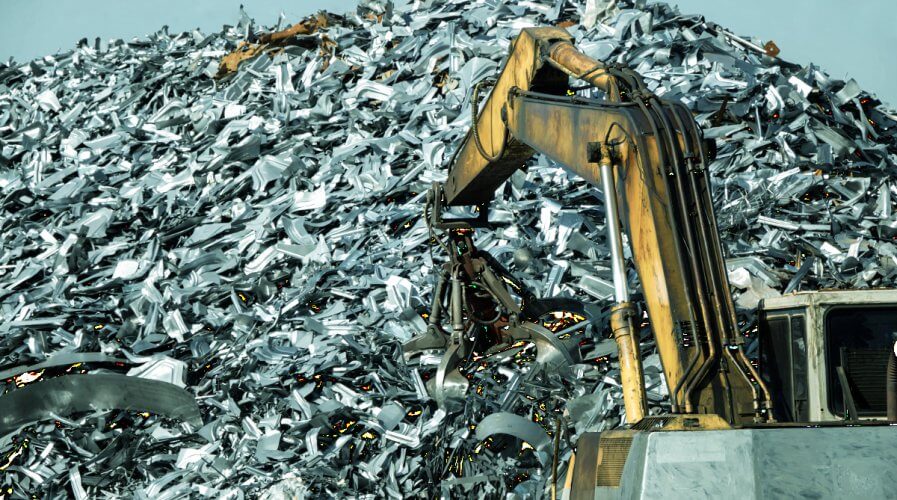
Don’t throw away your old technology! Repurpose it. Source: Shutterstock
A practical guide to repurpose your old IT kit
WHILE every business knows the value of green initiatives (even as the most cynical of public relations exercises), good policy should dictate that outdated IT equipment is recycled as much as possible.
In this article, we examine some of the myriads of ways in which old tech devices can be put to practical and positive use.
1. Wipe & begin again
Computers of all variants running Windows have a habit of gradually grinding to a halt after just a few years’ use. Any serious PC user will probably have his or her hard drive wiped, and all software reinstalled from scratch around once a year to promote computing efficiency.
Most end users never consider this wipe-and-re-use option, preferring rather, to complain about slow hardware and demand new kit. Reformatting of hard drives and re-installation (ideally from disk image templates) is enough to get the once-ailing hardware back on the road.
2. Storage refresh
Older machines can also simply get an upgrade by swapping out hard drives (HDDs) for solid state drives (SSDs). This basic change-over can add a speed boost to even the most poorly-performing PC.
Office PCs will also benefit from an increase in RAM. As software over time develops feature bloat and operating systems become more complex, additional RAM can reduce the time-consuming necessity (in processor terms) of reading & writing memory pages to and from disk.
Combining these two upgrade methods can add another year (or three) to machines once considered too sluggish, decreasing capital expenditure and promoting users’ efficiency and morale.
Corporate supply chains have an outsized role in achieving the UN goals – or not…https://t.co/9RbviIY7sn #Greenwash #Globalization
The first large-scale analysis of corporate practices for sourcing sustainable materials pic.twitter.com/c8zXVtrzlI— CECHR (@CECHR_UoD) February 16, 2018
3. Go open source
One way of recycling old PCs, not often considered, is to abandon the Windows operating system altogether. Installing a Linux distribution (or distro as they are known) onto the machine in place of Windows is often a highly viable option.
Linux distros now come in forms as easy to install as Windows (netboot, USB stick, server-based imaging, even DVD-ROM installs) and have graphical front-ends at least as good as Windows’s.
Many distros are designed to run on machines with barely any modern hardware worth mentioning, and even the largest of Linux variants will run more efficiently and quickly than its Windows equivalent.

Most end users never consider this wipe-and-re-use option, preferring rather, to complain about slow hardware and demand new kit. Source: Shutterstock
Many business apps co-exist today as both stand-alone installs on local machines and in a web-based form. Applications accessible online include Slack, Microsoft Office, Skype, OneDrive, Dropbox and many, many more. Therefore the only computing power required is the ability to connect to a local printer and run a modern web browser – Linux is more than capable.
For those users stuck on their Windows-based applications, Windows emulation in Wine or full virtual machines can and will happily run. The host of alternative Office applications join entirely different options, such as the Google suite of online services in use already right across many enterprises.
4. Retask and run services
The great swathes of open source software allow even the most modest PC to be re-tasked to provide one or more network services.
As businesses grow, the number of services bought-in will multiply, and with a little forethought, planning, and knowledge, these services can run in-house. For instance, email & calendar, messaging, file sharing, DNS, DHCP, VPN serving, and telephony – if it’s available as-a-service, you can probably run it in-house on retasked equipment.
Additionally, any good IT department will have at its disposal a full range of test rigs, with which to try out new deployments. As systems are upgraded, rather than roll out new software into production environments, systems can be trialed in the clinical safety of the IT department. In this way, business disruptions due to upgrades are neatly sandboxed.
5. Give it away
Although pretty obvious, alternatives do exist for old IT equipment which do not involve much more trouble than shipping kit to the nearest recycling point.
Local charities will hugely appreciate any IT hardware and software they are offered, and if this can be combined with a little help and advice in deploying it, so much the better.
Alternatively, charity may present in the form of staff members who could appreciate being given refurbished, older equipment for use at home, for instance by children or relatives.
Time is running out to join us at #ons2018 and we want to see you in Los Angeles! Information on registering here: https://t.co/dGK35jXPAA pic.twitter.com/fo47sdPJ8O
— The Linux Foundation (@linuxfoundation) February 19, 2018
6. Security
As most phones these days, and definitely all smartphones come with cameras and network capability, the security-minded business may wish to use older phones as fully IP-enabled, wireless security cameras.
Using software such as Xeoma, Manything or Alfred, all the features associated with high-end security systems can smoothly be slotted into place. Movement-activated video recording, remote monitoring, and SMS alerting on anomalous events are available out of the box, so a simple extra layer of security can be added to any premises.
Before your old technology devices are shipped off without a backward glance, bear in mind that as well as doing “the green thing”, organizations can benefit from a mindset of re-use and recycle. Lowered costs, speedy in-house free services, higher security and a contented community; are all business aims for which many will happily pay good money. Perhaps the means to achieve those ends, and more, are available already, right under our noses?
READ MORE
- Ethical AI: The renewed importance of safeguarding data and customer privacy in Generative AI applications
- How Japan balances AI-driven opportunities with cybersecurity needs
- Deploying SASE: Benchmarking your approach
- Insurance everywhere all at once: the digital transformation of the APAC insurance industry
- Google parent Alphabet eyes HubSpot: A potential acquisition shaping the future of CRM




